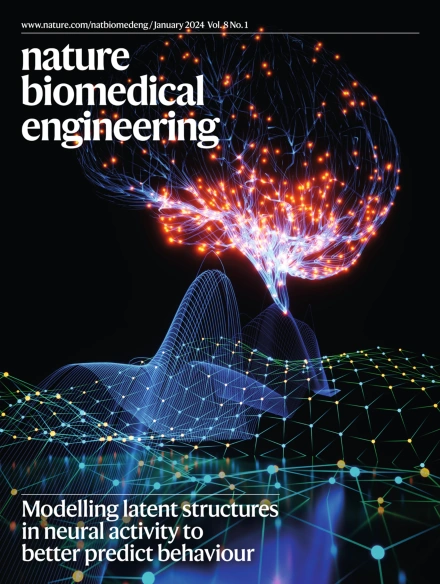健康和患病血脑屏障体外模型的组成和特性的元分析。
IF 26.8
1区 医学
Q1 ENGINEERING, BIOMEDICAL
引用次数: 0
摘要
人体血脑屏障(BBB)的体外模型越来越多地被用于开发能穿过BBB治疗中枢神经系统疾病的疗法。在此,我们报告了对健康血脑屏障以及胶质母细胞瘤、阿尔茨海默病、帕金森病和炎症性疾病中的血脑屏障的transwell和微流控模型的组成和特性进行的荟萃分析。我们发现,模型的类型、培养方法(静态或动态)、细胞类型和细胞比例以及用作细胞外基质的生物材料对再现 BBB 的低通透性和高表达紧密连接蛋白以及获得高跨内皮电阻都至关重要。具体来说,对于健康的 BBB 模型,内皮细胞和周细胞的加入以及生理剪切应力(约 10-20 达因厘米-2)是必要的,当加入星形胶质细胞时,星形胶质细胞或周细胞的数量应多于内皮细胞。我们希望这项荟萃分析能促进设计越来越多的 BBB 生理模型。本文章由计算机程序翻译,如有差异,请以英文原文为准。
Meta-analysis of the make-up and properties of in vitro models of the healthy and diseased blood-brain barrier.
In vitro models of the human blood-brain barrier (BBB) are increasingly used to develop therapeutics that can cross the BBB for treating diseases of the central nervous system. Here we report a meta-analysis of the make-up and properties of transwell and microfluidic models of the healthy BBB and of BBBs in glioblastoma, Alzheimer's disease, Parkinson's disease and inflammatory diseases. We found that the type of model, the culture method (static or dynamic), the cell types and cell ratios, and the biomaterials employed as extracellular matrix are all crucial to recapitulate the low permeability and high expression of tight-junction proteins of the BBB, and to obtain high trans-endothelial electrical resistance. Specifically, for models of the healthy BBB, the inclusion of endothelial cells and pericytes as well as physiological shear stresses (~10-20 dyne cm-2) are necessary, and when astrocytes are added, astrocytes or pericytes should outnumber endothelial cells. We expect this meta-analysis to facilitate the design of increasingly physiological models of the BBB.
求助全文
通过发布文献求助,成功后即可免费获取论文全文。
去求助
来源期刊

Nature Biomedical Engineering
Medicine-Medicine (miscellaneous)
CiteScore
45.30
自引率
1.10%
发文量
138
期刊介绍:
Nature Biomedical Engineering is an online-only monthly journal that was launched in January 2017. It aims to publish original research, reviews, and commentary focusing on applied biomedicine and health technology. The journal targets a diverse audience, including life scientists who are involved in developing experimental or computational systems and methods to enhance our understanding of human physiology. It also covers biomedical researchers and engineers who are engaged in designing or optimizing therapies, assays, devices, or procedures for diagnosing or treating diseases. Additionally, clinicians, who make use of research outputs to evaluate patient health or administer therapy in various clinical settings and healthcare contexts, are also part of the target audience.
 求助内容:
求助内容: 应助结果提醒方式:
应助结果提醒方式:


